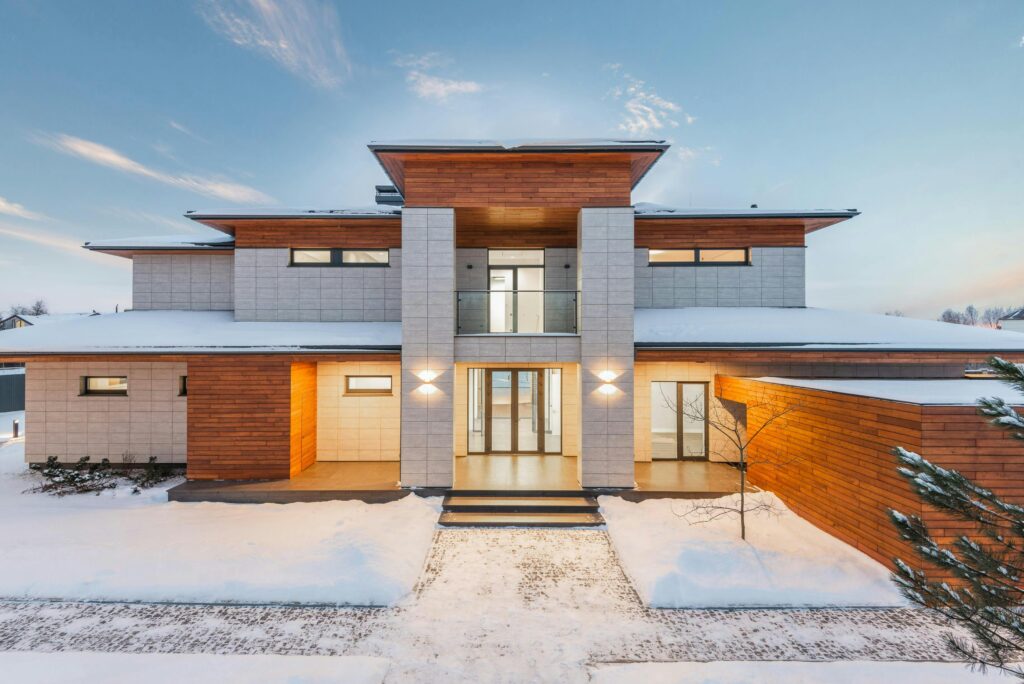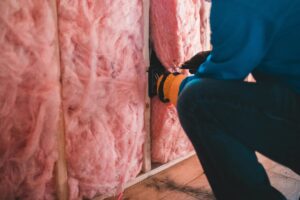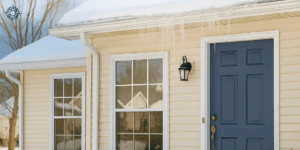Minnesota’s Winters Are Changing—But the Freeze/Thaw Cycle Still Matters
Minnesota winters aren’t what they used to be. According to a recent study by the Minnesota Department of Transportation, warmer seasonal temperatures have actually reduced the total number of freeze/thaw cycles across much of the state. However, this shift doesn’t mean the problem has gone away—it’s just changing form. Even with fewer cycles per year, the alternating patterns of freezing and melting continue to threaten the structural integrity of homes, especially those with older roofing, siding, or foundation systems.
Every Minnesota homeowner is familiar with the telltale signs: ice dams forming along roof edges, cracks creeping across a driveway, or water seeping into the basement after a thaw. These are all results of one powerful natural process that, while invisible, can wreak havoc if left unchecked—the freeze/thaw cycle.
In this article, we’ll explain what this cycle is, why it matters, and how it can affect major parts of your home—from roof to foundation—and what you can do to stay ahead of the damage.
Understanding the Freeze/Thaw Cycle—and Why Moisture Is the Culprit
At its simplest, a freeze/thaw cycle occurs whenever temperatures dip below freezing and then rise above it again. When water penetrates a material—like wood, concrete, or asphalt—and freezes, it expands roughly 9% in volume. That expansion creates internal stress, forcing tiny cracks to form. When the temperature rises, the ice melts, the material contracts, and moisture often penetrates even deeper into the newly formed fissures. Then, the next freeze expands it again. Over time, this cycle compounds, gradually breaking down the integrity of the material.
In Minnesota, where daytime thaws are often followed by nighttime freezes, this pattern can happen dozens of times per winter. Even though the total number of cycles is trending downward, the moisture loads from heavy snow and early spring melts mean the risk to homes is still significant. Moisture is the real enemy here—not just the cold.
From your roof to your foundation, understanding where water tends to collect and freeze is the key to protecting your investment.
Roof Damage: Shingle Lifting, Ice Dams, and Hidden Moisture Problems

Your roof takes the brunt of Minnesota’s harsh freeze/thaw cycles. When snow melts on the roof and refreezes along the eaves, ice dams can form—thick ridges of ice that trap melting water behind them. That trapped water can seep under shingles, wetting the underlayment and eventually leaking into your attic or drywall.
Early warning signs include shingle lifting, dark streaks or spots on the ceiling, and gutters that overflow even when not clogged. Over time, these seemingly minor symptoms can escalate into costly water damage.
Prevention Tips:
- Improve attic ventilation and insulation. Warm air escaping from the living space melts snow unevenly, creating ideal conditions for ice dams.
- Clean gutters before winter. Clogged gutters trap water that can freeze and push back under shingles.
- Inspect flashing and sealants annually. Freeze/thaw cycles can cause metal flashing to lift, leaving small openings for water.
A well-ventilated, properly sealed roof can handle Minnesota winters without complaint—but once moisture finds a pathway in, it doesn’t take long for problems to grow.
Siding and Exterior Walls: Warping, Gaps, and Water Infiltration
Your siding is your home’s first defense against moisture—and one of the most common areas affected by expansion and contraction from temperature swings. Vinyl, wood, and even fiber cement siding can warp or buckle when trapped moisture freezes behind it. Over time, the stress can cause panels to separate, caulk to fail, and paint to peel or bubble.
If you notice gaps at seams, soft or swollen boards, or water stains on interior walls, it may be due to freeze/thaw-driven infiltration.
Maintenance Tips:
- Check caulking around windows, doors, and joints at least once per season.
- Repaint or reseal wood siding every few years to maintain a weatherproof barrier.
- Keep vegetation trimmed away from siding to allow airflow and drying.
When left unchecked, small imperfections in siding can let moisture seep behind the surface—setting the stage for mold, rot, and structural decay. A proactive inspection in fall or early spring can save thousands later.
Foundation Stress: Cracks, Shifting, and Water Intrusion
Your foundation bears the ultimate weight of freeze/thaw damage. As soil around your home freezes, it expands—putting lateral pressure against foundation walls. When it thaws, the soil contracts, often leaving gaps that water can later fill. This constant push-and-pull can cause concrete to crack or shift, leading to uneven floors, wall separation, or water seepage in your basement.
Early Warning Signs:
- New cracks in foundation walls or floors.
- Doors or windows sticking due to subtle wall movement.
- Water staining or dampness after heavy snowmelt.
Prevention Strategies:
- Ensure proper grading. Soil should slope away from your home to direct water outward.
- Extend downspouts at least 6 feet. This prevents water from pooling near the foundation.
- Seal cracks promptly. Use professional-grade epoxy or polyurethane sealants before winter.
- Consider a waterproofing membrane. For older homes or known problem areas, it’s a strong long-term defense.
The freeze/thaw process is inevitable—but water management is fully within your control.
Flatwork and Driveways: Concrete Damage and Trip Hazards

Few things show freeze thaw cycle concrete damage like a crumbling driveway or uneven sidewalk. When water seeps into porous concrete, freezes, and expands, it creates micro-fractures that grow into visible cracks and surface scaling. This process—known as spalling—can quickly deteriorate the appearance and safety of your property.
Minnesota’s use of road salt compounds the issue. Salt accelerates moisture absorption and weakens the concrete surface.
Prevention Tips:
- Apply a high-quality concrete sealer before winter to block moisture.
- Avoid de-icing salts on newer concrete; use sand or non-chloride alternatives instead.
- Maintain good drainage. Keep gutters, downspouts, and grading clear to prevent runoff pooling on driveways or patios.
- Repair cracks early. A $20 tube of crack filler can save you from a $2,000 replacement later.
Routine maintenance and prompt repairs are the best defenses against the relentless freeze/thaw cycle’s effects on concrete.
Protecting Your Home Through Regular Maintenance and Inspections
While Minnesota’s climate continues to evolve, the fundamentals of home care remain the same: control moisture, promote drainage, and inspect regularly. The best time to schedule a professional inspection is early fall—before freezing temperatures arrive—or in spring, right after the thaw.
A full exterior inspection from Compass Exteriors includes:
- Roof and gutter assessment
- Siding and caulking inspection
- Foundation and grading review
- Driveway and walkway evaluation
Catching issues early allows for small, manageable fixes instead of large-scale repairs later. A little prevention now can add decades of life to your home’s exterior systems.
Preserve Your Home’s Long-Term Value with Compass Exteriors
Freeze/thaw damage might start small—a lifted shingle, a fine crack in concrete—but left unattended, these warning signs can evolve into major repairs. Protecting your home starts with awareness and regular attention to the systems that guard against Minnesota’s extremes.
Compass Exteriors specializes in helping homeowners maintain and restore their property’s integrity through quality materials, skilled craftsmanship, and transparent service.
Ready to protect your home from Minnesota’s freeze/thaw cycles?
Schedule your inspection today and take the first step toward peace of mind—and a home built to endure every season.







